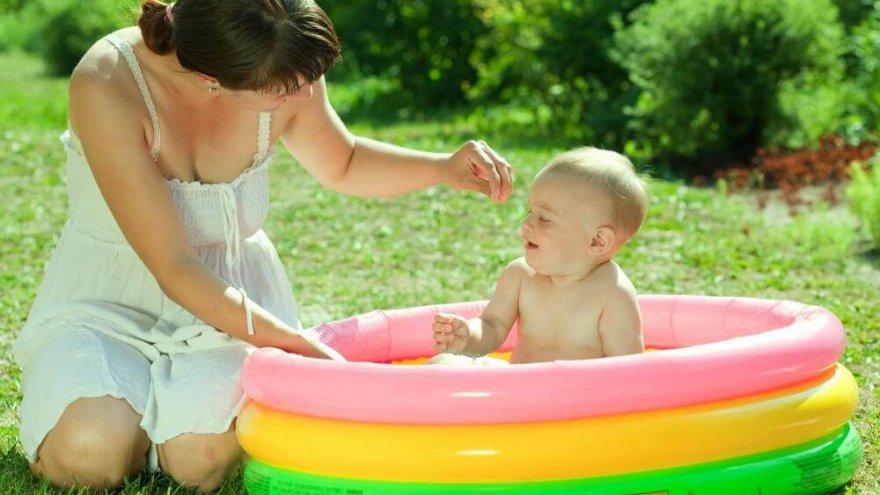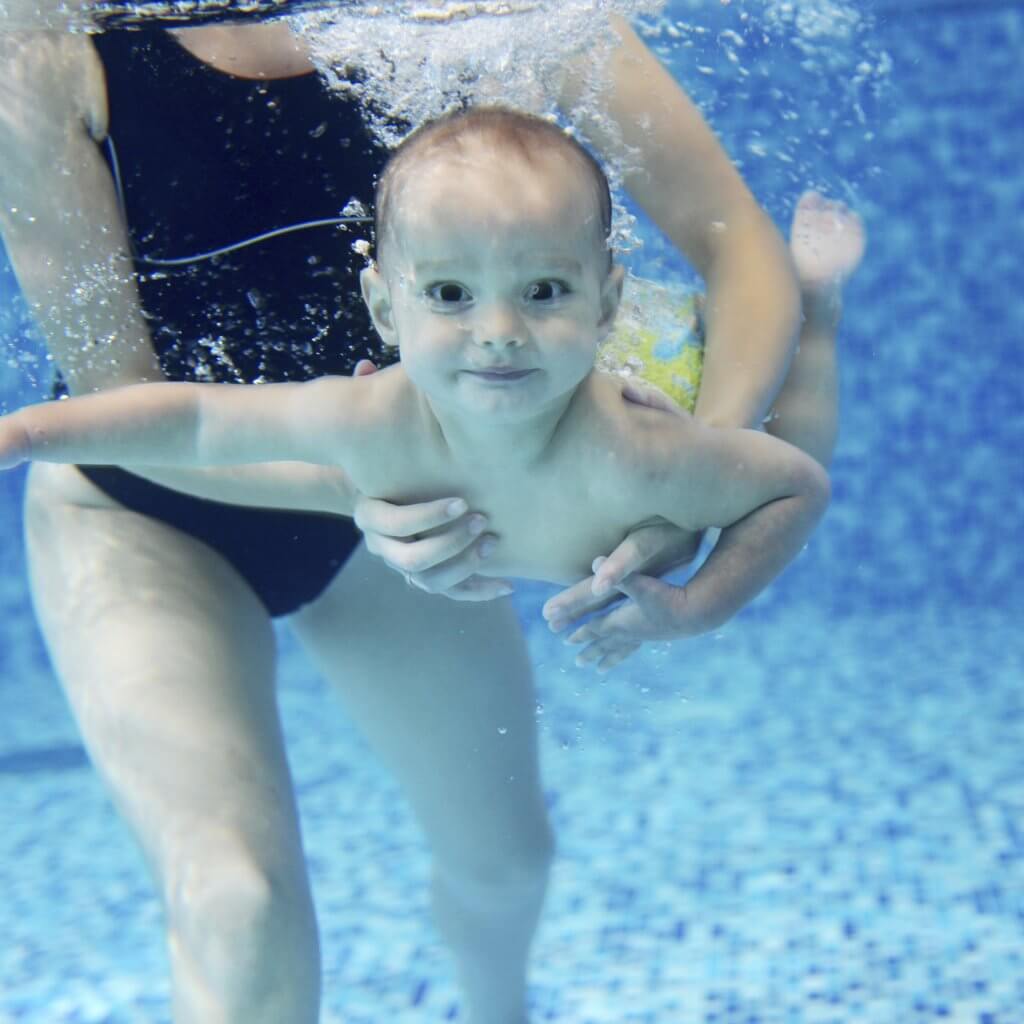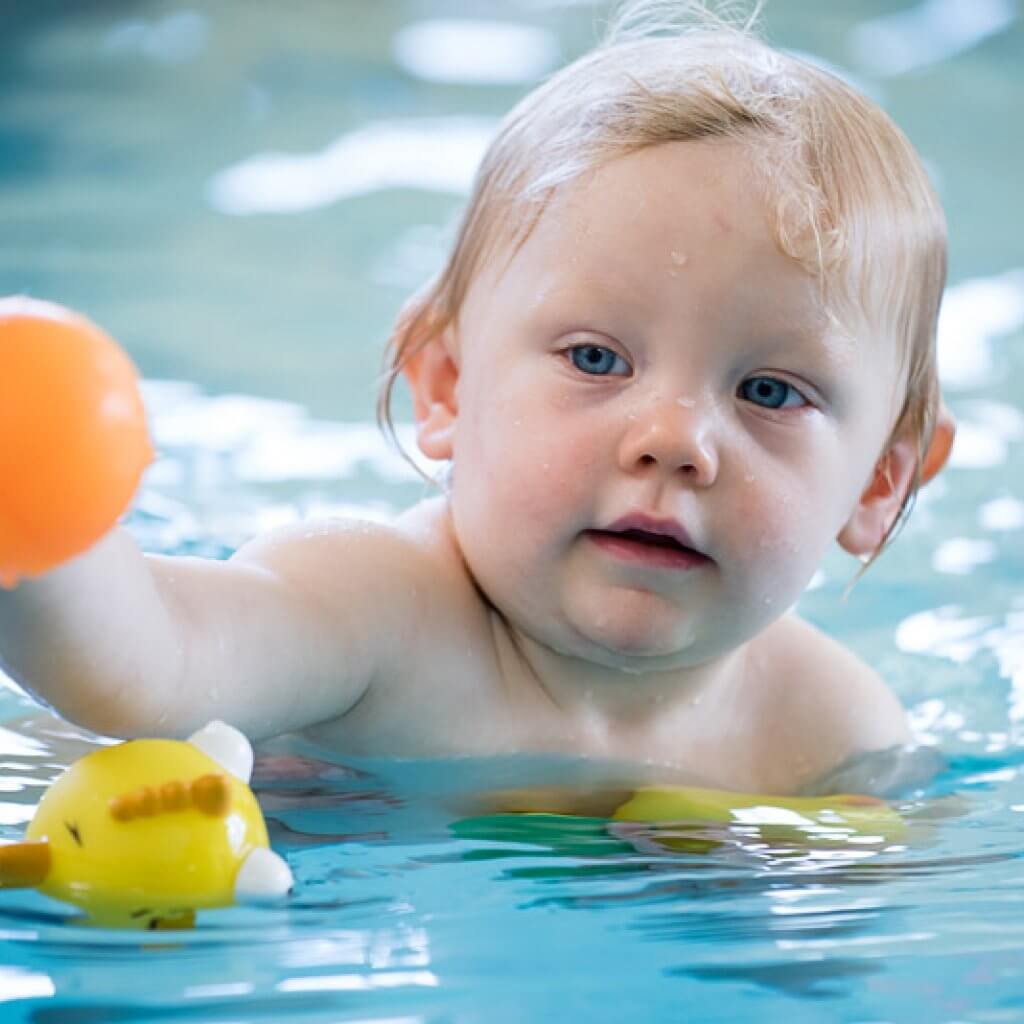When and How to Start Your Child in Swimming

Back in the ‘olden days’, teaching your child to swim was simple—throw them in the water, well that’s how some people would do it. In recent years, that isn’t exactly how it’s down anymore. As a matter of fact, pediatricians have said that giving your child swimming lessons at the age of one is much more common than it used to be. So how does one teach their child to swim in this century? By following the simple ideas below, you can have your little one swimming like a fish in no time!
Invest in the Proper Equipment
Like many other activities, having the correct equipment can make all the difference when teaching your child to swim. These items should be invested in no matter the age or skill of your child for safety purposes, first and foremost.
Arm Floats—a popular item used by parents of younger children. They are inexpensive and designed to keep the little ones afloat while they learn how to kick on their own.
Safety Rings—be sure to find the right size to fit your child to ensure their safety, these are usually worn around their waist.
Swim Belt—these a adjustable belts that can fit kids of most ages. The swim belt works best for teaching swimming in deeper water as opposed to shallow.
Swimming Vest—any family with young children should have one of these on hand whether you’re swimming in a backyard pool or lake swimming. These vests allow for your child to move more freely than rings or arm floats. One perk of these vests is that the floating devices inside can be removed when your child becomes more confident in their abilities.
Floats or Kickboards—used by swimming teachers to help while teaching swimming lessons, and inexpensive to buy for the beginning swimmer. They have multiple uses to help beginners.
Noodles—provide wonderful support that helps with arm and leg movement. Also very popular with swimming instructors that have larger classes.
Swim Fin—helps with your child’s confidence level while in the water allowing them total movement of their arms and legs while keeping them afloat, not to mention they can look like a shark, what kid wouldn’t want that?
While all of these devices are helpful, be sure to understand how to use them properly so that they can be used to their full potential. Items like these are not perfect, so also be sure to learn their disadvantages if any.
Take Them Swimming
While experts say that children can safely take swim lessons when they are one year old, taking them with you when your family goes to the beach or pool is a good idea. If you have a six month old, get them some little swimmers or bare bottom, and let them ‘feel’ the water while you hold them. Wade out to your knees or waist and let them feel the water on their bellies, parents of young children can be seen doing this all of the time. As long as you’ve got a hold on them, letting them glide along the water on their belly is not a bad thing to do, even letting their feet dangle in the water might excite them and elicit a big old toothless smile from their little faces.
Sign Them Up for Swimming Lessons at 1 Year Old

As mentioned before, pediatric doctors have said that getting your child swimming lessons at one year old can be a good thing. It used to be that they said four years old was the best, but with the risk of younger, preschool aged children drowning, these statistics have changed over the years. For those parents that cannot afford to pay for swimming lessons but know how to swim themselves, teaching them the basics can be your responsibility. Maybe you have a pool in your backyard that your family makes use of in the summer months, taking them out to swim in it with you is a better idea and the memories that you make will be priceless.
Train Consistently
While you obviously can’t swim in the backyard all year long, unless you live in a hot climate that stays that way all year, check around where you live for pools in the off seasons. Many community centers like the YMCA have swimming all year round. Although it may cost you a little money to use the community center’s pools, be consistent when teaching your child. Consistency can eliminate the unthinkable possibility of drowning when they reach preschool or school age. If you plan on teaching them to swim, you need to be consistent in your teaching, even if it’s only the doggy paddle or how to tread water that they learn, even that can save their lives.
Parent-Baby Classes
Many communities offer these classes for parents to hear and understand water messages and how to go about teaching their children about water safety and how to introduce your child to the dangers of messing around near water. There are also similar classes such as infant swimming and infant aquatics that parents should consider as well.
Make a Game Out of It
What that means is simply to talk to the fishies or ‘pretending’ to talk to the fishies and they talk back. Providing that they are old enough, have them blow bubbles in the water and ‘listen’ to the fishies talk back. Also have them try to catch these pretend fish by pulling the water toward them with both hands, like the front, breaststroke. Be sure to encourage them over and over and smile a lot because when they see you enjoying yourself they will ultimately know that swimming can be fun! There are tons of games you can play with your child that involve water, all you need is some creativity, water, and that big old smile on their faces when they realize that the actually like to play in the water.
Do Not Push the Issue

If you find that your child is scared of the water or unsure of it, do not push it. Not all children are born swimmers and pushing the issue with your child can easily lead to mistakes and tragedy. Wait until they feel they are ready to embark on learning something such as swimming, some children will take more time and others will jump in feet first.
Resources are plentiful for parents that are considering teaching their child to swim. Check with friends, family, your physician, and the community for ideas that can lead you and your child in the right direction. Do some research online to understand more about when to teach your child to swim and what are good ideas compared to bad ideas.
By following simple, safety rules and purchasing the proper equipment, parents can be assured that they are teaching their child about water responsibility, the responsible way. When following the tips provided here be sure to alter then to your child’s specific needs as children all learn differently. Then that moment when your child learns to swim and you and he or she take your first swim together, are memories that can never be forgotten.







